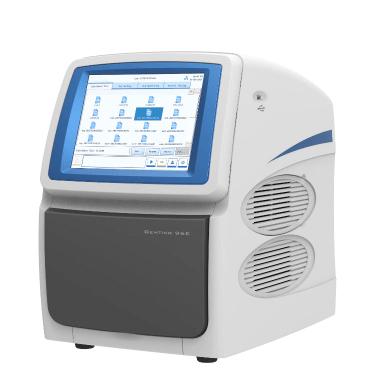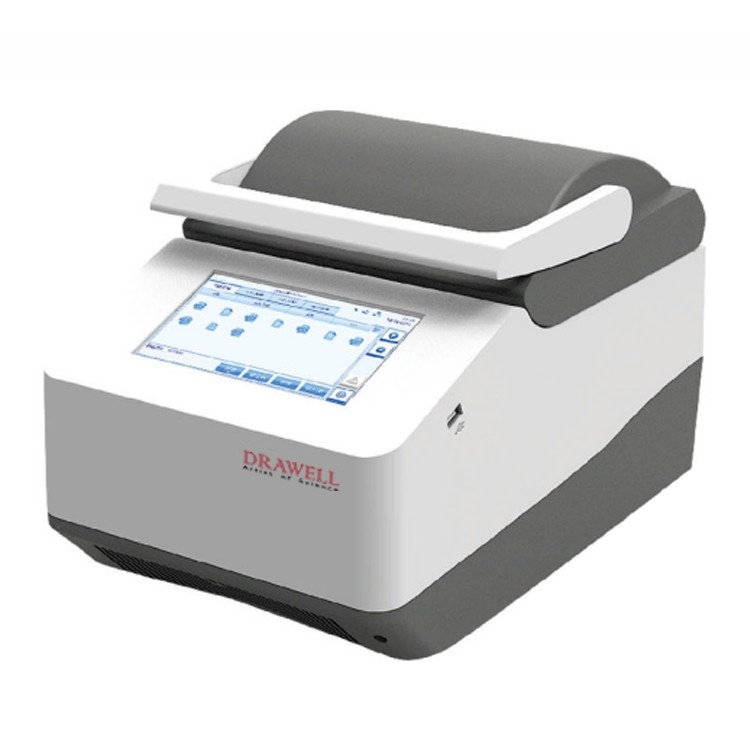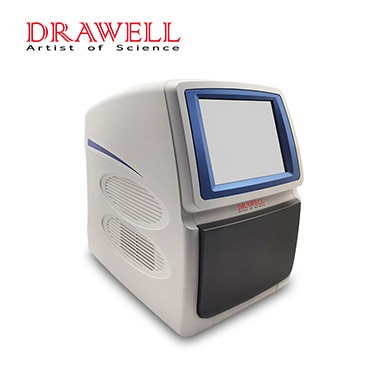The Polymerase Chain Reaction (PCR) is a game-changing technique that allows scientists to solve DNA mysteries with unprecedented precision and efficiency. The amplification of DNA by polymerase chain reaction (PCR) has become a cornerstone in a variety of scientific disciplines, ranging from genetics and medical diagnostics to forensics and beyond. In this article, we will focus on the topic of amplification of DNA by PCR, exploring the principles, applications, and significance of the Polymerase Chain Reaction in the amplification of DNA.

Key Principles Underlying the Amplification of DNA by PCR
1. Denaturation
Principle: Denaturation is the first step in each PCR cycle, in which the DNA template is heated to a high temperature, typically around 94-98 degrees Celsius.
Explanation: The hydrogen bonds between complementary DNA strands break at high temperatures, resulting in the separation of the double-stranded DNA into two single strands. This serves as a template for the creation of new DNA strands.
2. Annealing
Principle: The reaction temperature is reduced after denaturation to allow primers to anneal to their complementary sequences on single-stranded DNA.
Explanation: Primers are single-stranded, short DNA sequences that are designed to bind to specific flanking regions of the target DNA sequence. By providing a template for DNA polymerase, they serve as the starting point for DNA synthesis.
3. Extension
Principle: To facilitate DNA polymerase activity, the reaction temperature is raised to around 72 degrees Celsius.
Explanation: The enzyme DNA polymerase, which is responsible for the synthesis of new DNA strands, adds nucleotides to the primers, resulting in the formation of a complementary strand for each template. The DNA sequence is extended as a result of this step.
4. DNA Polymerase
Principle: DNA polymerase is an enzyme that is essential in the PCR process.
Explanation: DNA polymerase synthesizes new DNA strands by adding nucleotides complementary to the template strand. The most commonly used DNA polymerase in PCR is Taq polymerase, which is derived from the bacterium Thermus aquaticus and is known for its heat stability.
5. Thermal Cycling
Principle: PCR involves a series of thermal cycles.
Explanation: The denaturation, annealing, and extension steps are repeated in cycles within a specialized machine called a thermal cycler. This process results in exponential amplification, with each cycle doubling the number of DNA copies. The number of cycles determines the final amount of amplified DNA.

6. Primer Design
Principle: The specificity of PCR relies on the design of specific primers.
Explanation: Primers are designed to be complementary to the sequences flanking the target DNA region. Proper primer design ensures that amplification occurs only at the desired DNA segment, providing specificity to the reaction.
7. Template DNA
Principle: PCR requires a small amount of template DNA.
Explanation: The DNA template is the starting material for the amplification process. Even a minute quantity of DNA can be amplified to generate millions of copies, making PCR highly sensitive.
8. Cycle Optimization
Principle: PCR cycle optimization is critical for efficient and specific amplification.
Explanation: To achieve efficient and specific amplification without introducing artifacts or non-specific products, the number of cycles and duration of each step must be carefully optimized.
Understanding these principles is critical for successfully applying PCR in a variety of scientific, medical, and forensic contexts. Researchers can tailor PCR to specific amplification needs by manipulating these key factors, contributing to the precision and reliability of this fundamental molecular biology technique.

Key Aspects Highlighting the Significance of the Amplification of DNA by PCR
1. Precision and Specificity
PCR allows for the selective amplification of a specific DNA sequence. This precision is crucial in various applications where researchers and diagnosticians need to target and study particular genes or regions of interest within the vast and complex genome. The ability to amplify specific DNA fragments with high specificity is a defining feature of PCR.
2. Rapid DNA Amplification
Before the advent of PCR, amplifying DNA was a time-consuming and labor-intensive process. PCR revolutionized DNA amplification by enabling rapid and efficient synthesis of millions of copies of a target DNA sequence within a few hours. This acceleration in the amplification process has significantly expedited scientific research and diagnostic procedures.
3. Molecular Cloning and Genetic Engineering
PCR has emerged as a critical tool in molecular cloning and genetic engineering. It enables scientists to amplify specific DNA fragments for further manipulation and analysis. This capability has aided in the development of genetically modified organisms, gene function research, and biotechnological product development.
4. Diagnostic Applications
PCR is widely used in medical diagnostics for the detection and quantification of pathogens. In the field of infectious diseases, PCR enables the identification of viruses, bacteria, and other microorganisms with high sensitivity. It has become an indispensable tool in the diagnosis of genetic disorders, cancer, and various other diseases.
5. Forensic Science
PCR has revolutionized forensic science by enabling the analysis of minute and degraded DNA samples found at crime scenes. Its sensitivity allows forensic experts to generate DNA profiles from trace amounts of biological material, providing crucial evidence in criminal investigations.
6. Ancient DNA Studies
By facilitating the amplification of ancient DNA, PCR has opened up new frontiers in paleontology and archaeology. Researchers have been able to study the genomes of extinct species, track the evolution of organisms over time, and investigate the genetic diversity of ancient human populations as a result of this.

7. Genomic Research and Sequencing
PCR is an essential component of genomic research because it allows for the amplification of specific DNA regions for further analysis. In DNA sequencing, PCR is often employed to generate sufficient quantities of DNA for sequencing reactions, contributing to advancements in our understanding of genomics.
8. Personalized Medicine
The precision and speed of PCR have contributed to the development of personalized medicine. PCR-based diagnostics can identify specific genetic variations that influence an individual’s response to treatment, allowing for tailored therapeutic interventions.
9. Environmental Studies
In environmental studies, PCR is used to detect and quantify microbial populations, assess biodiversity, and track the presence of specific genes or organisms in different ecosystems. This has environmental conservation and management implications.
Conclusion
DNA amplification by PCR is a marvel of modern molecular biology, opening up new possibilities for researchers, diagnosticians, and scientists in a variety of fields. Its precision, speed, and versatility have revolutionized the way we study and manipulate genetic material, resulting in ground-breaking discoveries and advancements in medicine, genetics, forensics, and other fields. PCR remains a fundamental tool in the ever-expanding toolkit of molecular biologists, illuminating the complexities of the genetic code and propelling scientific exploration into uncharted territory.





